Yes, You Can Be A Successful Income Investor!: Reaching For Yield In Today’s Market Paperback
$12.87
| Author(s) | , |
|---|---|
| Format |
|
| Pages |
277 |
| Publication Year |
2005 |
Yes, You Can Be A Successful Income Investor shows you how you can safely secure the highest possible yield from your savings. With the bursting of the stock market bubble, and after 13 rate cuts by the Federal Reserve, yields on CDs and Money Market funds tread at historic lows—a negative return after inflation. With smaller savings coupled with lower returns on what savings remain, retirees and others living on fixed-income investments watch in horror as their income checks shrink with each passing month.
However, there are investments that still earn a significant rate of return—and do so reliably and consistently. These fixed-income securities include bonds, real estate investment trusts, preferred stocks, and emerging market debt, among others. As 70 million Americans reach retirement age in the next 15 years, fixed-income investing will become a sociologically inevitable megatrend.
Author’s Note:
Our plan is simple: We’re going to talk about a number of different income-yielding securities, and then tell you how to combine them in a portfolio, where we’ll endeavor to secure the maximum yield for the least amount of risk. We’re going to name names and be specific, rather than talk in generalities. The investments we call to your attention in this book are all available to ordinary retail investors. Our recommendations are guidelines but by no means exhaustive. They should be good jumping-off points, but there may be others that are superior. Our experience is that simpler is usually better, and that being well diversified and keeping expenses low—two of our goals—will serve you well in the long run.
If we mention a particular investment along the way that has you smacking your lips, please read the entire book before opening your wallet. One of the biggest differences between amateur and professional investors is that professionals have a top-down, “big picture” view of their investment portfolios, while everyone else tends to have a collection of individual securities that struck their fancy at one time or another, but without much regard as to how they all fit together. It makes more sense to decide on your overall strategy first, and then choose the specific investments to park inside it.
The world of income-producing securities is a mysterious jungle. This book is a sightseeing tour bus, pointing out some of the lavish orchids you may wish to acquire for your garden, while steering you away from some of the tigers known to be man-eaters. Let’s start by looking at the circumstances that led us to write it.
Contents:
- Welcome to the Real World
- Investing for Yield
- Bond Basics
- Risks and Rewards of Bond Investing
- Essential Bonds for Fixed-Income Investors
- Higher-Yielding Bonds
- Stocks for Income
- Preferred Stock
- Real Estate Investment Trusts
- The Special Case for Annuities
- Approach These Income Strategies with Caution
- Your Income Portfolio
Yes, You Can Be A Successful Income Investor!: Reaching For Yield In Today's Market Paperback By Ben Stein, Phil Demuth pdf
18 reviews for Yes, You Can Be A Successful Income Investor!: Reaching For Yield In Today’s Market Paperback
Clear filtersOnly logged in customers who have purchased this product may leave a review.

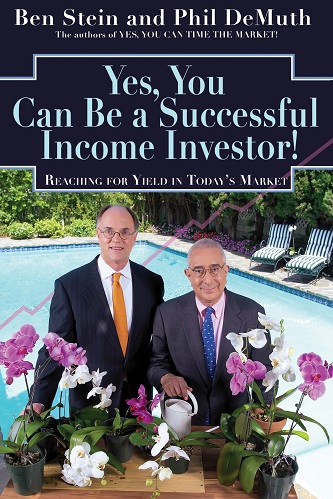

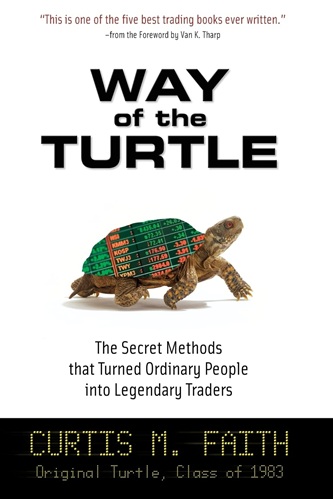


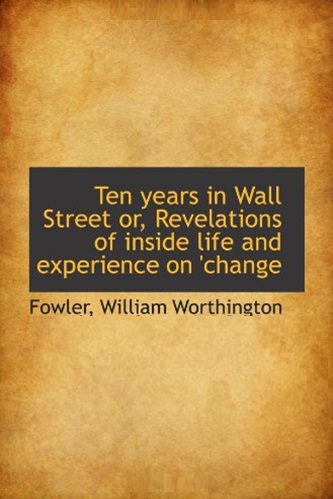
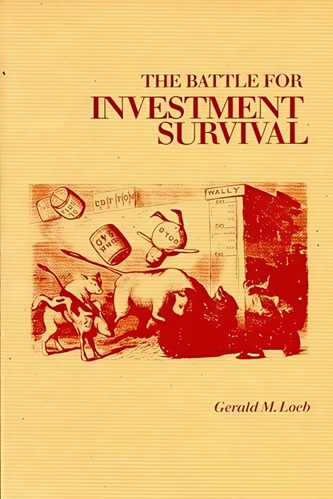
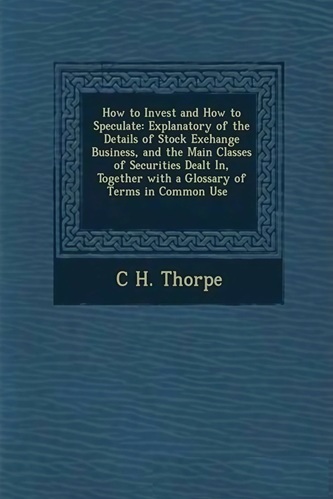

Anna Kemp (verified owner) –
I am a very slow reader. Usually, it takes me about five minutes to read one page. However, since this book is so easy to read and one’s attention is kept by the humor that Mr. Stein and Mr. Demuth use; I was able to finish it in my spare time in 10 days. I liked it so much that I bought it. I would recommend this book to anyone who is interested in investing and is at any stage of the process (beginner or advanced).
Maisie Little (verified owner) –
This is an excellent book to teach you how to invest for the highest yield. I should add that Jeremy Siegel’s books are also good for this type of investing. Say bye to the Apples, Microsofts, retailers, Googles, and other growth stocks, and hello to high yield, income producing securities. The key is to buy and hold forever, reinvesting your dividends along the way. As the years unfold you will find your portfolio grow larger and larger. Who cares if the market is up or down? Let it go down, and your reinvested dividends will buy you more shares.
Calliope McCullough (verified owner) –
Ben Stein is one of the very few authors whose work is an outcropping of his successes in life – not a reaction against his failures.
If you read this book, or any other work by him, you’ll realize that this guy gets it. He understands how to live a successful life and gives advice that’s derived from his own experiences – not what he wishes he had done. Savings, investment, love, happiness – he tackles these issues with the realism that is so often slighted by self-proclaimed gurus who haven’t got a clue.
My litmus test for authors of books such as these: Would this guy go broke if I nobody bought his book?
Ben Stein is doing all of us a great favor by sharing his knowledge, which has allowed him to live such a well-rounded and successful life.
Jaycee Lucas (verified owner) –
…these guys gave some dreadful advice. They recommended the bonds of Bear Stearns, Lehman and ABN Amro. All are worthless now.
Clayton Perez (verified owner) –
With the approaching retirement of large numbers of Baby Boomers retiring in the next few years it is appearant that the investment plans of many small investors will need to change to provide the retirement income that will be needed. In this book there is a detailed discussion on how to invest for income even in the times of our present very low interest rates.
Beyond the introductory chapters that cover the general subject, there are chapters on preferred stock,k world income funds, real estate investment trusts, leveraged municipal bonds, emerging market debt, and certain kinds of annuities, and several others.
Of course, the usual cautions remain. The Fed has been raising interest rates for some time now, although at a very slow rate. Investing for the future is really rather easy, you just have to guess right about the future of the market and your own life.
Bronson Beard (verified owner) –
Ben Stein and Phil DeMuth are very dedicated to helping people get serious in preparing for retirement. They bring several strong virtues to this task. First, they not only reject investment fads, they believe in and focus on solid investment basics. Second, they believe that you have the final responsibility for your money, so if an investment or financial program is too complicated for you to understand in every detail, they advise you to stay away from it. Third, they understand and preach diversification. Simply, diversification aids the investor by removing the risk associated with investing in just one firm or one market sector and therefore stabilizes earnings.
The idea behind this book is quite good. For the past two or three decades, all the talk around investing has been about growth stocks where you make your money by realizing capital gains. Before the age of double dividend taxation, people invested for the income provided by dividends. The present market for stocks is priced high in historical terms (see Stein and DeMuth’s excellent “Yes, You Can Time the Market” to understand why this is true) and it is all too likely that a correction could provide losses instead of gains. In this book, the authors provide an approach to investing that provides a return by gaining dividend income from stocks and interest income from bonds while avoiding the risk of capital losses as much as possible.
Stein and DeMuth begin by talking about bonds. They provide an excellent primer and then talk about the various types of bonds, their risks, and their returns. Their discussion will help the reader understand that a higher return comes with increased risks. In effect, the higher return is a compensation for taking on that higher risk. The authors help the reader understand that there are some bonds whose increased risk is worth taking and many whose higher return is not sufficient compensation for someone counting on the income for their daily bread.
The discussion then turns to developing a stock portfolio that is designed for income rather than capital gains. This is an excellent and important discussion because it runs counter to most of the stock talk of the past generation. Just as with bonds, they show the effects of various portfolio constructions. They are very good on what matters to the income investor and what is dangerous to your financial health. They have a short chapter on preferred stock that is interesting and gives adequate warning to stay away from complicated investments that you don’t understand.
The section on REITs is terrific and will help the average investor understand them. They can be an excellent part of a portfolio and are an excellent way to participate in real estate without having to own and maintain your own properties. Remember, in retirement you want to be enjoying yourself, not going through the hassle of being a real estate manager.
They also talk about annuities in a sensible and helpful way. Stein recounts how annuities helped his parents have a terrific retirement. The authors also balance that with cautions about the balance between fixed and variable annuities and offer solid advice about their complications. They note that most of the people who sell annuities don’t really understand what they are selling and to stay away from those you don’t understand completely.
The heart of the book is the section on how to combine all of these investments into a portfolio that balances your ability to take risk versus return. They provide various example portfolios while always encouraging you to do your own research. They want you to use the examples as models of what to do rather than as investment recommendations.
Stein and DeMuth also provide a very good website that provides current information and links as well as errata for the book (you know the small typos that creep into any book).
This is an excellent handbook for anyone who wants to take responsibility for his or her retirement and is serious about understanding what is involved. There are too many sad stories of people who work their whole lives to save some cash and then have it evaporate in some inappropriate investment that promised them gold falling from the sky. Stein and DeMuth have provided an excellent guide to understanding what is real and what is fluff. You could not spend $15 better than to buy this book and then study it carefully. If you do, you will be a much better investor and steward of your financial future.
Melvin Stanton (verified owner) –
nice
Eleanor Carr (verified owner) –
Fine book on income investing. Good for all. Highly recommend this to all who are interested in increasing their income and preserving capital. Hats off to the authors.
Eve Cherry (verified owner) –
Very informative, ease reading, great examples.
Briar Ortiz (verified owner) –
I read this book and fealt it was not only informative for us babyboomers but for my children, too.
The main part of the book is on how to combine all of the investments they write on into a portfolio that balances your ability to take risk versus return.
They are witty and they give you a website to use.
I am ready to buy there next book!
Chance Chen (verified owner) –
Excellent book … short, easy to read with good illustrations. Would have liked an explanation as to how to select dividend stocks rather than using the recommended list since the recommended list will change over time.
Ailani Michael (verified owner) –
each and every book these guys write i buy. their writing is clear, simple and to the point. yes, there a lot of books on this stuff, but i think their presentation is perfect.
Valeria Fields (verified owner) –
Easy to understand.
Kash Hodges (verified owner) –
The authors do a great job breaking down an extremely sophisticated asset class so the everyman investor can optimize their returns while minimizing risk(Maximizing the Sharpe ratio).
Their focus on a real return is a smart one. The S&P 500 has underperformed the total return on lowly 3-month Treasury bills for what is now more than 8 years, earning average annual total returns of just 3.2% since early-1998. Over the past decade, the S&P 500 still sports an unimpressive annual total return of just 8.20%, despite containing the best 4-year market performance (1996-2000) since the rally from post-depression lows in the 1930’s. YIKES!!!!!! This makes one take pause and consider adjusting the allocation.
Let’s just say the “market portfolio” can no longer be considered the S&P 500- This is what Harvard and their endowment managers realized years ago.
A great book that provides a tremendous amount of information and that I will use again and again in the future. Take a look around at fixed income books out there. There aren’t many of them, and this is by far the best one.
Everest Ho (verified owner) –
This was the best income investing book I have read. I loved this book, it was superbly well written with practical income investment advice in stocks, bonds (treasuries, corporate, municipal, junk etc) and real estate (REITs). This book would be very useful regardless of the amount of money you have to invest. The authors make specific recommendations without any vague statements. There is income portfolio advice. It is easy to read and I finished it in one sitting. The book had a lot of humor sprinkled throughout. I loved the two stories in one of the earlier chapters in which the authors said that if you understood these 2 stories you would understand the bond market and they were right on! There are plenty of numbers and figures but the authors have accomplished a remarkable feat in that they wrote the subject matter in such a way that any high schooler could understand. Yet the material is far from “dumbed down”.
Ezra Madden (verified owner) –
Good advice good humour
Lennox Pratt (verified owner) –
A good book but not as complete as Yes, You can still Retire Comfortably.
Does not fully elaborate on the risks of bonds in dealing with Financials (sub-prime) and Bond defaults. Perhaps an update of this book is in order.
Rome Larsen (verified owner) –
This is a very different investment book. While the books one typically sees suggest ways to get rich– that is, to accumulate capital– as quickly as possible, this short, readable book suggests that those near or in retirement should be thinking about how to deploy their resources in a way that maximizes their income. That is, staying comfortable is more important than getting rich.
Stein and DeMuth explain that most investment fads are not only unsuitable for older investors, but, worse, they just don’t work. They make a point that many people who lost their money in the market meltdown a few years ago should have thought about: If an investment is too complicated to understand, then it should be avoided. In the end, there’s no magic bullet; diversification and adherence to investment basics will pay off. The body of the book is devoted to explaining how to do that.
The book discusses various types of bonds, dividend-paying stocks, real estate investment trusts, and annuities. The one thing that is mentioned in every chapter is the basic principle that risk and reward are in balance; the only way to get a high reward is to take more risk. Striking the correct balance is, of course, an individual decision, and the most important part of the book is the discussion about how to combine various types of investments in in a way that balances risk and reward. There are numerous sample portfolios and many specific bond and stock funds suggested– and also numerous cautions that investors need to do their own research before they buy anything. The authors provide a link to their website, which provides current information and links.
A bonus is that unlike many investment books, this one is very readable. The authors don’t dumb anything down, but they take pains to explain things without using jargon. Readers familiar with Stein’s TV and movie style of delivery will recognize it here, too.
This is a very valuable book that will provide the reader with a lot to think about– and a good way to do that thinking.